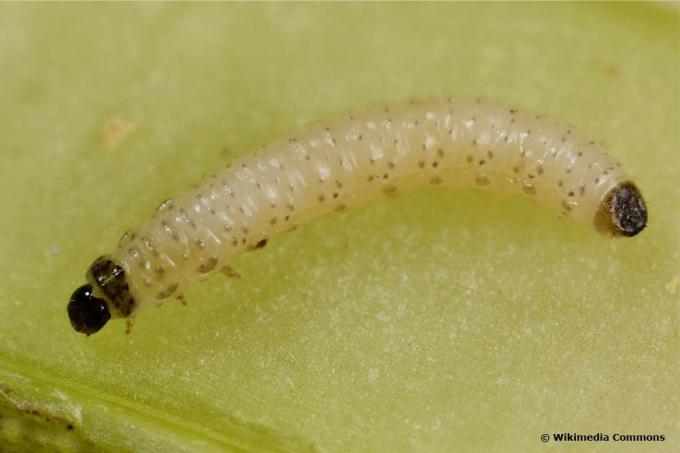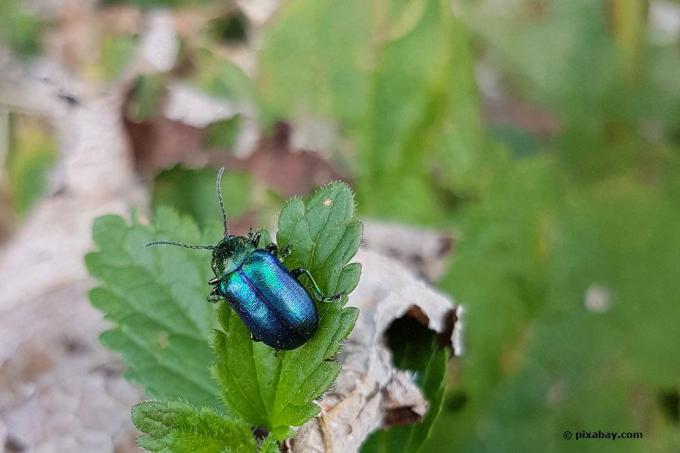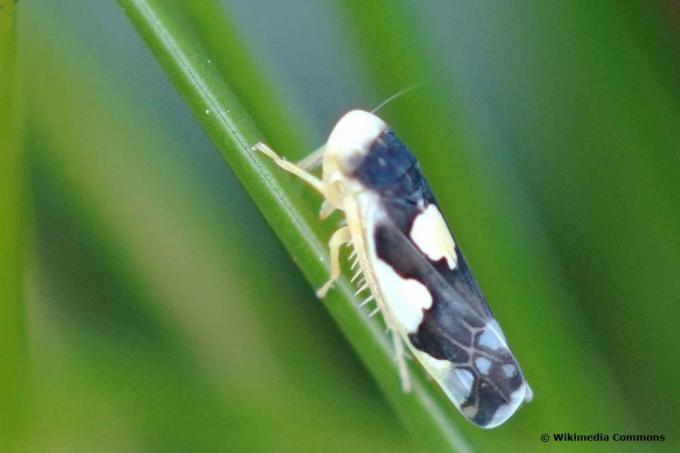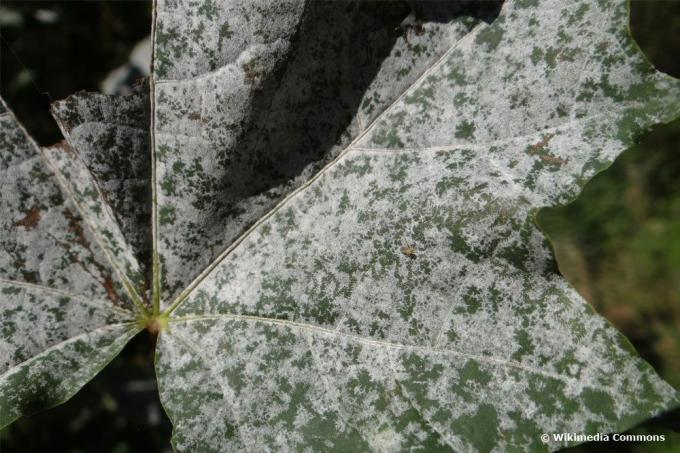
table of contents
- Pests
- Aphids
- Earth flea beetle (Psylliodes)
- Mint leaf beetle (Chrysolina species)
- Dwarf leafhoppers (Eupteryx spec.)
- Diseases
- Mint rust
- mildew
- Environmental factors
The mentha is one of the perennial herbs that should not be missing in any garden. The plants are generally very robust and rarely become ill. Under optimal conditions, they can spread very quickly in the garden. Get the mint suddenly yellow leaves, something is wrong and you have to act. Often it is heat and drought that cause problems for the plant, but various diseases and pests are also possible causes.
Pests
There are countless animal pests in the garden, but they generally avoid the different Mentha species. Their essential oils protect the plant from the insects to a certain extent. Most pests feed on the sap, some also eat the leaves. If left untreated, severe infestation can kill the mint.
Aphids

Aphids prefer to stay on the tips of the fresh shoots and on the underside of the leaves. They are very small and have a spherical, mostly greenish body. Aphids secrete a sugary, sticky substance called honeydew. This promotes the growth of sooty fungus on the plants, which can be recognized by its black color.
Damage image
- yellow leaves
- stunted shoots
- necrotic spots
- black shoot tips
First aid
If the aphid population is limited to a few leaves or shoots, cut them out. You can shower sturdy plants with a sharp jet of water. A soap or neem oil solution has proven effective in combating this. If the infestation is severe, it is easier to cut off the entire plant close to the ground.
Earth flea beetle (Psylliodes)

Earth flea beetles, also known as earth fleas, are only two millimeters long. Their body is yellow-brown to reddish, the wing covers mostly yellow in color. The adult beetles hibernate in the ground and lay their eggs in spring after they have attacked the leaves of the mint. The cause for the death of the peppermint is mostly hidden in the ground, because the tiny larvae start eating at the roots from April onwards.
Symptoms
- tiny, round holes in the leaves
- yellow leaves and death of the mint from root damage
measures
Earth flea beetles can be controlled naturally with plant manure from wormwood or tansy. A solution of cooked onions or garlic also repels the animals. In addition, it makes sense to put a board coated with caterpillar glue next to the mint. Jumping earth flea beetles stick to the glue.
Tip: Frequent chopping and keeping the soil moist minimizes the risk of infestation.
Mint leaf beetle (Chrysolina species)

Occasionally, the mint leaf beetle appears on the mint from April or May. The beetles are easily recognizable by their shiny metallic exterior. Depending on the species, the beetles can be green, blue or copper-colored to black.
Damage image
- Leaf edge damage (mainly on the shoot tips)
- brown, shiny larvae on the underside of the leaves from June
Combat
Cut back infected shoots early to reduce egg clutches. It also makes sense to spray a solution of soap with a little rapeseed oil to contain the population. If in doubt, cut the plant back to the first leaf attachment.
Dwarf leafhoppers (Eupteryx spec.)

The flying insects mainly attack Mint family how basil, Marjoram, oregano, sage, thyme and also the mint. The cicadas are only two to four millimeters in size and spotted yellowish to gray-green. If you shake the plant, the insects will jump up and fly away.
Symptoms
- punctiform lightening on the leaves
- Yellowing of the leaves
Combat
It is not necessary to fight the cicadas. As a rule, the damage is not particularly great and the mentha is still suitable for consumption. If the animals bother them, they can attract and catch them with yellow boards.
Diseases
Pathogens such as bacteria, viruses or fungi can penetrate the plant via the roots or wounds and cause great damage there. The most common diseases in mint include:
Mint rust

Among the many species of rust that infest plants in our gardens, there is one that specializes in mint plants. The cause of the disease is a fungus called Puccinia menthae, which feels good in damp weather. It spreads very quickly and quickly affects plants in neighboring beds and gardens. This includes not only mentha species, but also many other herbs such as marjoram, savory and oregano.
Symptoms
- light yellow or rusty brown spots on stems and leaves
- pale and crooked young shoots
- Wither the entire plant
First aid
Cutting back the first symptoms early often helps. As a rule, heavily infected mints can no longer be saved. To prevent the fungus from spreading, remove all diseased plants and their roots from the bed if possible.
Preventive measures
The risk of illness can be minimized by removing all dead shoots and leaves in autumn and disposing of them with household waste. Sufficient space between individual plants allows the air to circulate better and moisture to dry off.
Tip: Preferably plant resistant varieties such as the 'Multimentha'.
mildew

Powdery mildew spores can be found almost everywhere. While powdery mildew occurs mainly in warm and dry conditions, downy mildew is an absolute bad weather fungus. He loves the moisture. Although they are different types of mushrooms, the symptoms and how to treat them are very similar.
Damage image
- white, powdery spots on leaves and stems
- later: yellow and brown color of the leaves
- Death of the plant
Combat
Remove all infected leaves and shoots as soon as the first symptoms are noticeable. The fungus can be combated well with plant broths. This includes Field horsetail, Tansy or garlic stock. If in doubt, it makes sense to cut off all of the shoots close to the ground.
Note: The cut of diseased plants must be disposed of with household waste.
Environmental factors
If the mint is exposed to dry winds, frost or extreme heat, it gets yellow leaves. Potted plants are particularly sensitive to these factors. If these are in the blazing sun, not only the leaves but also the roots can be damaged by the heat and lack of water. The most common causes of yellow leaves include:
- dryness
- Waterlogging (root rot)
- Temperature shock from too cold irrigation water
- Potted plants: too sunny location (especially in the root area)
